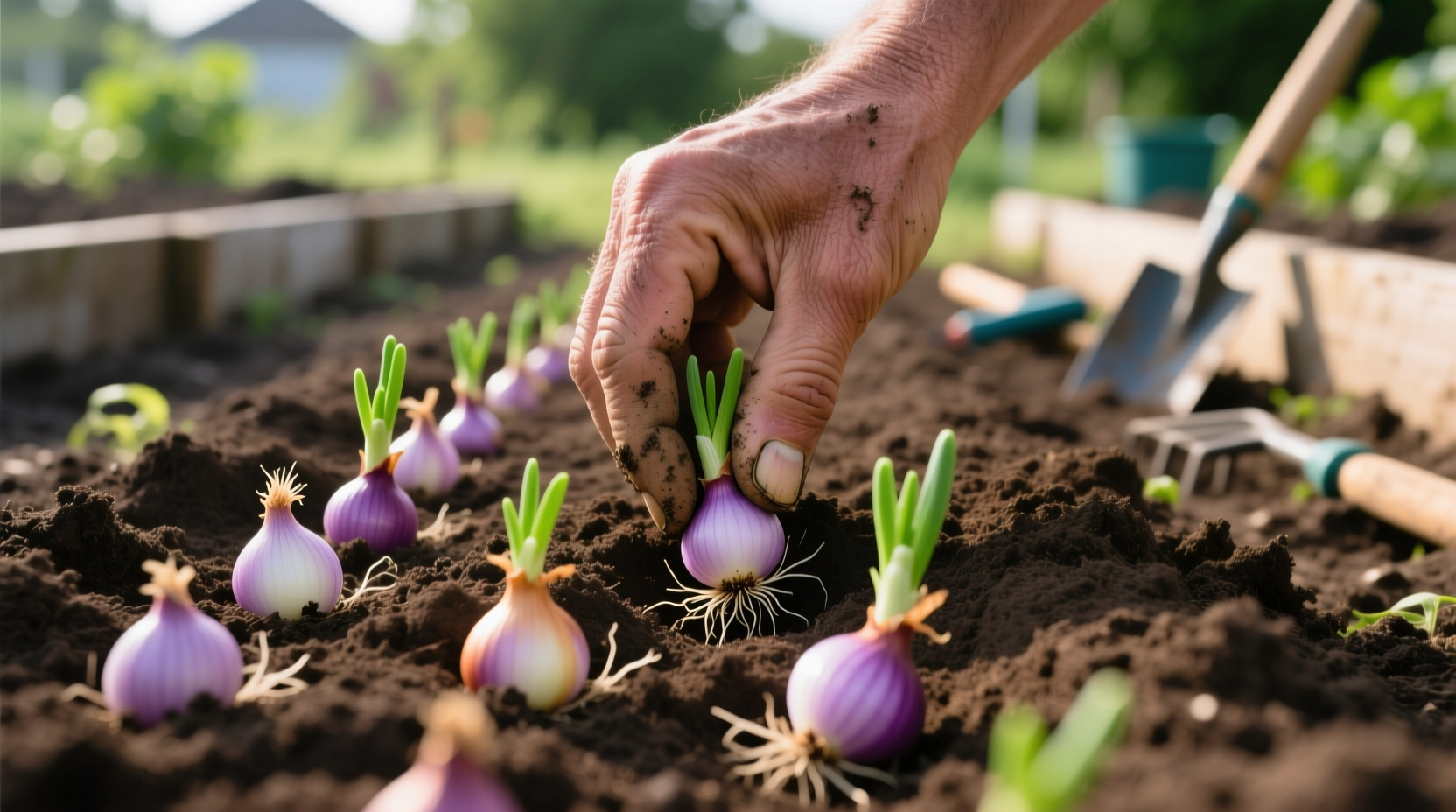Plant onion sets 1-2 inches deep with 4-6 inches between bulbs in early spring as soon as soil can be worked. Choose firm, disease-free bulbs without sprouts, point the flat root end downward, and water immediately after planting. This method yields mature onions in 60-90 days with less effort than growing from seeds.
Ready to grow your own flavorful onions with minimal effort? Setting onion sets is the fastest, most reliable method for home gardeners to produce a bountiful harvest. Unlike finicky seeds that require perfect conditions, onion sets—small pre-grown bulbs—give you a head start with established root systems that resist pests and weather challenges. Whether you're a beginner gardener or a seasoned grower looking to optimize your harvest, this guide delivers proven techniques used by agricultural experts to maximize your onion yield.
Why Onion Sets Outperform Seeds for Home Gardeners
University agricultural extensions consistently recommend sets for home growers due to their higher success rate. While seeds require precise temperature control and months of careful tending, sets bypass the vulnerable seedling stage. The University of Minnesota Extension confirms sets establish 30% faster than seedlings and mature 2-3 weeks earlier than seed-grown onions.
| Growing Method | Time to Maturity | Success Rate | Best For |
|---|---|---|---|
| Onion Sets | 60-90 days | 85-90% | Beginners, short seasons |
| Transplants | 75-100 days | 70-75% | Experienced gardeners |
| Seeds | 100-120 days | 50-60% | Cold climates, specialty varieties |
Choosing Quality Onion Sets
Not all sets deliver equal results. Select bulbs no larger than ¾ inch in diameter—oversized sets often bolt (send up flower stalks) before forming proper bulbs. The Oregon State University Extension recommends inspecting for firmness and absence of mold or soft spots. Store sets in a cool, dry place until planting if you can't get them in the ground immediately after purchase.
Perfect Timing for Planting Success
Timing makes or breaks your onion harvest. Plant sets 4-6 weeks before your last expected frost date when soil temperatures reach 40°F (4°C). In most temperate zones, this means late March to early April. Southern gardeners can plant in late fall for winter harvests. The Old Farmer's Almanac notes that planting too early in cold, wet soil causes sets to rot, while late planting yields smaller bulbs.
Step-by-Step Planting Guide
Follow these research-backed steps for optimal results:
- Prepare soil with 2-3 inches of compost worked into the top 6 inches
- Loosen soil to 12-inch depth for unrestricted root growth
- Create shallow trenches 1 inch deep spaced 12-18 inches apart
- Place sets with pointed end up, flat root end down
- Space bulbs 4-6 inches apart (4" for storage onions, 6" for larger varieties)
- Cover with 1 inch of soil, firm gently
- Water thoroughly to settle soil around bulbs

Avoid These Common Planting Mistakes
Gardeners frequently undermine their harvest with these errors:
- Planting too deep (more than 2 inches) restricts bulb development
- Using sets larger than ¾ inch diameter that bolt prematurely
- Planting in poorly drained soil causing rot
- Overcrowding bulbs leading to small, misshapen onions
- Skipping soil preparation resulting in stunted growth
Essential Aftercare for Maximum Bulb Development
Proper care after planting determines your final harvest size:
Water consistently to maintain moist (not soggy) soil—about 1 inch per week. Reduce watering when tops begin falling over, signaling maturity. The University of Wisconsin Extension emphasizes that inconsistent moisture causes splitting and disease. Apply 2-3 inches of straw mulch to suppress weeds and maintain even soil temperature.
Harvesting and Curing Your Onion Crop
Harvest when at least 50% of tops have fallen over naturally. Gently lift bulbs with a garden fork, then cure in a warm, dry, well-ventilated area for 2-3 weeks. Properly cured onions develop dry, papery skins that prevent rot during storage. The Utah State University Extension confirms that curing at 75-80°F with good airflow extends storage life up to 6 months.
Troubleshooting Poor Results
If your onions underperform, consider these solutions:
- Small bulbs: Overcrowding or nitrogen deficiency—thin plants and apply balanced fertilizer
- Bolting: Temperature fluctuations—choose bolt-resistant varieties next season
- Rotted sets: Cold, wet soil—improve drainage and plant later
- Pale growth: Insufficient sunlight—move to location with 6+ hours of direct sun
Seasonal Growth Timeline
Understanding this progression helps identify problems early:
- Weeks 1-2: Root establishment and initial green growth
- Weeks 3-6: Rapid leaf development (critical for bulb size)
- Weeks 7-10: Bulb formation begins as days lengthen
- Weeks 11-14: Bulb swelling accelerates with summer heat
- Weeks 15-16: Tops fall over signaling harvest time
Climate-Specific Considerations
Successful onion growing requires adapting to your region:
- Cold climates: Plant as soon as soil thaws; choose short-day varieties
- Warm climates: Plant in fall for winter harvest; use intermediate-day types
- Humid regions: Increase spacing to 6 inches for better airflow
- Dry areas: Mulch heavily and use drip irrigation for consistent moisture











 浙公网安备
33010002000092号
浙公网安备
33010002000092号 浙B2-20120091-4
浙B2-20120091-4